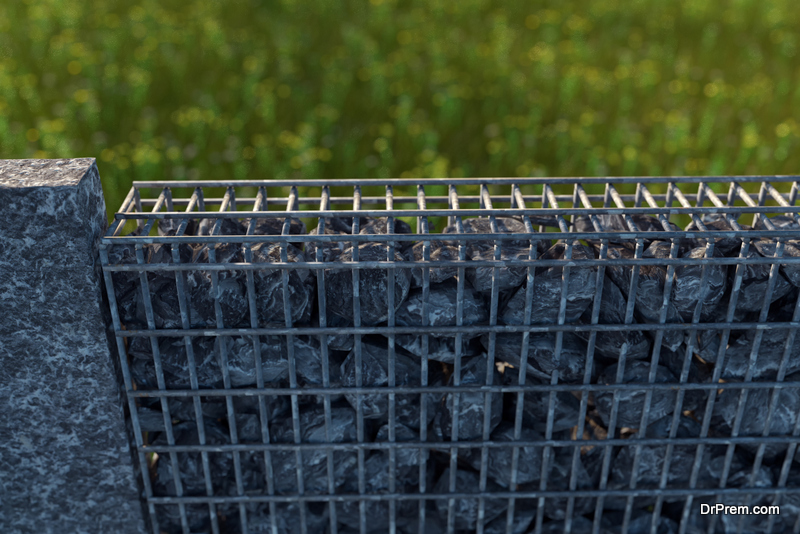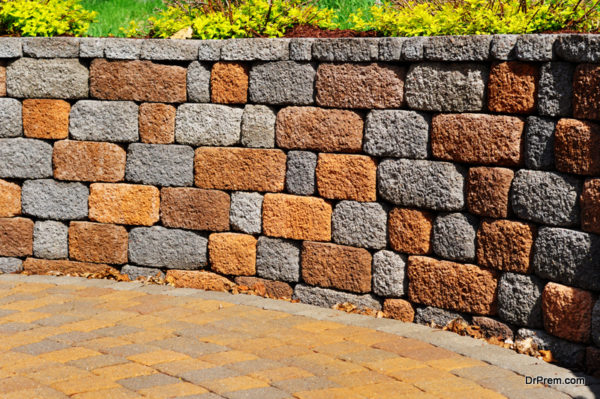So lately you’ve maintained some extra concern over your backyard, not because the grass is getting too long or woodchucks keep gnawing their way under the fence, but because the landscape is tilted to such a degree that the danger of soil erosion—or maybe even a landslide—commands attention. Things are getting out of hand. But how to give your property some much-needed support? Is it possible to level off the slope, or at the very least, provide some reinforcement? We got with Yorba Linda Concrete Pros to find out more about retaining walls.
Predicaments like the above typically mean it’s time for a retaining wall. Retaining walls are built against sloping landscape so that moisture has a more difficult time breaking down the earth, which can cause further sliding, and in extreme circumstances, damage to the foundation of nearby structures. A retaining wall can also level off land to afford owners more room for patios or gardens. This is good news. The bad news is that, depending on the material you wish the wall to be made of, construction can get expensive. Decorative concrete and natural stone are common elements of the finest retaining walls, but if you’re not looking to spring for stuff like that, there are some highly effective alternatives. Alternatives such as:
1. Metal

Now we realize that metal isn’t exactly what leaps to mind when it comes to blending in or connecting with nature. The truth of the matter, though, is that a retaining wall made of metal is strong. For about $5 per square foot, you’re going to get durability, water resistance, and even a few aesthetic choices in corrugated or plate design. Common kinds of metal for this purpose include:
- Steel plate, at about $3 per square foot, which is lightweight and will not rust
- Corten steel, again at around $3 per square foot; it’s erosion resistant and lasts a long time
- Aluminum, $10 per panel, great for protection against water, requires no maintenance
2. Cinder Block Walls
Cinder blocks or CMU blocks are very plain, basic blocks of concrete with a hollow center. You can use these babies to erect a suitable retaining wall for about $10 to 12 dollars per square foot. Suitable in that the wall mustn’t be too high or too long, as CMU blocks are not designed to retain walls. Don’t worry: So long as they’re kept within their limits, they will do the job. Cinder blocks can be plastered or painted to look more dapper, so you needn’t be too put off by all that dull gray. Save a bit of money on reliable protection by using cinder blocks.
3. Timber Walls

Another reasonably priced material for today’s purpose is timber. For around $15 per square foot, you can get a sturdy grade that creates a handsome look. There are a few caveats to keep in mind, however. For one, retaining walls made of wood should not be over four feet high; beyond this, they tend to become unsafe. Over time timber will also decay and need to be replaced. And then there’s the shape of the wall itself: for wood, it’s always going to be straight. If you want bowing or curves, the wood must be placed at sharp angles that may not result in an appealing piece to lay eyes on, though connecting posts go a long way toward eliminating this issue. Done properly, these walls will add twenty years’ significant beauty to any landscape without putting a major dent in your bank account.
4. Traditional Brick
Brick is dashingly austere. One look at a brick retaining wall is usually all it takes to think that a job is being well done. Indeed, this is the very case, as the material has a formidable reputation for durability while lending poetical appeal to any structure it composes. You can use brick for about the same price as timber—$14 to $15 per square foot, but with all the extra strength that comes with it. This being said, there are some other costs to consider, such as what goes for mortar and—if the wall in question happens to be too large for a DYI endeavor—professional installation.
If the time has come for you to have a retaining wall erected for your home, consider carefully not only how much it will cost but also the presentation it’s going to give, and of course, the load you intend for it to bear. With these three things in mind, you’re certain to make the best, healthiest choice for that sloping backyard.
Article Submitted By Community Writer




